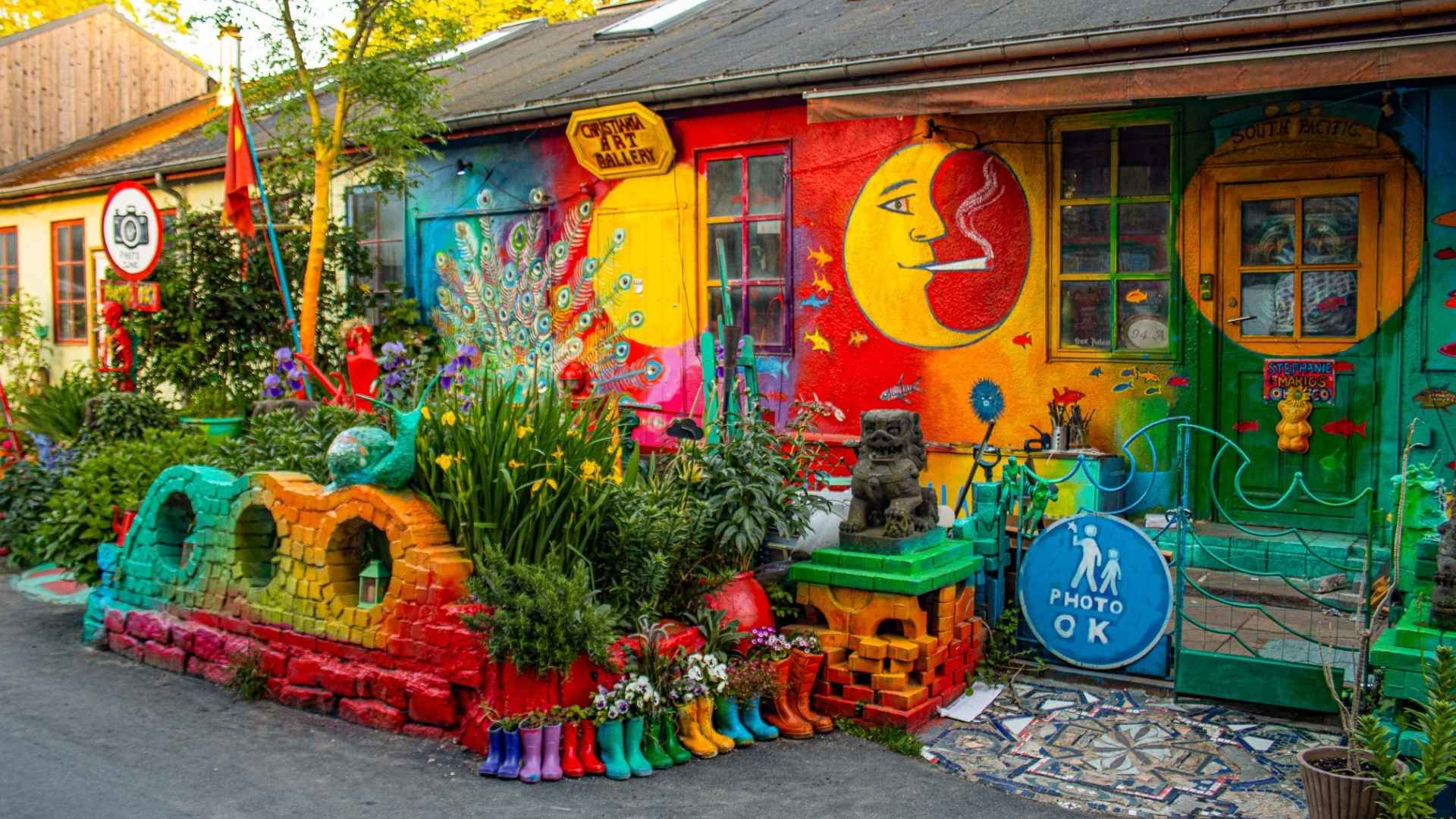When you think of the must-see attractions in Copenhagen, the most popular ones could easily roll off your tongue: The Little Mermaid, Tivoli Gardens, Amalienborg Palace, the list goes on. But nestled in the heart of the city, there's a more subtle, yet no less enchanting, place of wonder: The Botanical Gardens.
What is the Story Behind the Botanical Gardens?

The Copenhagen Botanical Gardens are a must-see for nature lovers and anyone looking to experience Denmark’s passion for green living. Established way back in 1600, the Gardens have long been a peaceful escape in the heart of Copenhagen. Interestingly, the Garden wasn't always where it is now. The Gardens were relocated twice before finding their perfect home in 1870—right next to the beautiful Rosenborg Castle, one of the city’s most famous landmarks.
So, why the move? In the 19th century, it was all about creating a green, harmonious space near the royal residence. Rosenborg Castle, built by King Christian IV in the early 1600s, was once a royal residence and now houses the crown jewels of Denmark. The idea was to place the Botanical Gardens near the castle, allowing the public to enjoy both natural beauty and royal grandeur in one visit. The Gardens and Rosenborg became intertwined—offering visitors a unique mix of history and nature right in the city center.
If you decide to visit the Botanical Garden in Copenhagen, you'll walk through 9,000 different plant species from all over the world.
What is a Botanical Garden?
A botanical garden is much more than just a place to admire beautiful plants. It’s a living collection, where each plant is labeled with its scientific name and often organized into special themes, like medicinal plants or flora from specific regions. These gardens play a vital role in conservation and research, preserving rare species and educating the public about biodiversity.
Botanical gardens around the world, including the Botanical Garden in Copenhagen, serve as important hubs for both scientific study and public engagement. With a vast range of plants from across the globe, they offer visitors the chance to explore diverse ecosystems, while promoting sustainability and the protection of our natural world.
What is a Botanical Garden For?

Botanical gardens play a crucial role in research, conservation, and promoting an understanding of plant diversity. There, you are not just a spectator, but a participant, learning about nature's astounding diversity, seeing rare plant species and becoming immersed in a soothing, green environment. At the same time, they are habitats for many lifeforms, preserving the delicate ecosystems.
In the Botanical Garden in Copenhagen, there is an arboretum featuring rock gardens, perennials, old rose varieties, Danish and international plants, and trees over 100 years old. The garden covers 5,000 square meters under glass.
Is The Botanical Gardens in Copenhagen Free?

The Botanical Gardens in Copenhagen are absolutely free when walking outside, making them one of the best budget-friendly Copenhagen attractions. However, be aware that entrance to the Palm House and other buildings is not free.
This green haven is dedicated to preserving plant species and providing visitors a tranquil escape; it's a natural treasure you can explore without a price tag. And right next to it you will find Rosenborg Castle which is also worth a visit.
How long to spend in Botanical Gardens Copenhagen?
You can easily spend 2 to 3 hours exploring the Copenhagen Botanical Gardens, but the exact time depends on what you want to experience. If you're into nature, start with a relaxing walk through the gardens' 10 hectares, where you can discover over 9,000 plant species from around the world, including rock gardens, a conifer hill, and a dedicated section for Danish plants. The historic Palm House from 1874 is a must-see, featuring tropical plants, giant bamboo, and the rare Amorphophallus Titanum, known for its massive and sometimes fragrant bloom.
During the summer, don't miss the Butterfly House, where you can observe butterflies up close in their natural habitat. If you enjoy learning, guided tours are available, offering insights into the garden’s rich botanical history and plant collections. You can also take a break at the small café or browse the garden shop for souvenirs.
For nature lovers or families, there's enough to keep you engaged for half a day, especially if you take your time exploring the many different zones and glasshouses.
Is There a Map for Botanical Gardens?
Even though exploration is a key part of the fun, arm yourself with a map before getting lost amidst the greenery. The garden spreads over a vast 9.5 hectares with greenhouse complexes and more than 13,000 species of plants. You can find the map at the entrance, or even better, download it right from the Garden's official website to have it with you at all times.
The must-see part of the Botanical Gardens is its famous Palm House, a beautifully sculpted greenhouse that's home to a rich diversity of tropical and subtropical species. Also, the garden's lake, featuring an enchanting stone bridge draped in vegetation, is a great spot for that perfect instagramable snapshot.
Discover More of Copenhagen With StoryHunt
.avif)
With StoryHunt, exploring Copenhagen becomes an adventure. Our app fulfills the desire for understanding the culture and history behind places, turning your visit to these top sights into an immersive experience. Not limited to the Botanical Gardens, our app offers self-guided audio walks across Copenhagen, covering all the major attractions. Continue your exploration from the Botanical Gardens to the nearby Rosenborg Castle, Amalienborg Palace, and The King's Garden. So, why wait? Download the StoryHunt app now and unravel the untold stories behind the faces of Copenhagen one walk at a time.

.webp)




















.avif)
.avif)



.jpg)
















.avif)





